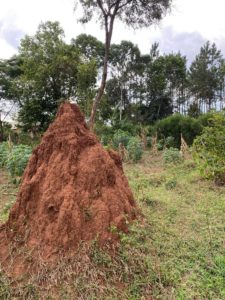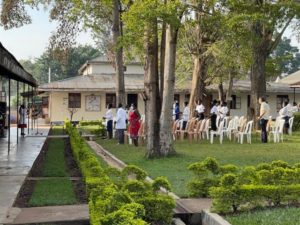Today I ended the work week in diabetes clinic which occurs every Friday. It was the first day I wasn’t constantly looking up things because the medical knowledge that I have already learned on the subject is very transferable. In a lot of ways the patient conversations were very similar to what I have experienced in the US as well. Patients, upon hearing their diagnosis of diabetes for the first time, are typically resistant to start medications and there is a sort of negotiation process that happens between the provider and the patient about how long to try lifestyle modifications before introducing medications. The medications available here are metformin, sulfonylureas like glimepiride or glibenclamide, and insulin (short acting and intermediate acting). Patients here typically do not have glucometers so the fasting blood sugars they have gotten in diabetes clinic are typically the only data available. Because of this, the patient history and report on how they are eating at home and whether they have experienced any symptoms of hypo or hyperglycemia is critical in making management decisions. Hemoglobin A1c and kidney function (routine tests for patients with diabetes in the US) are obtained occasionally. It is not included in the yearly fee that patients pay for diabetes clinic and medications though, and they face paying approximately $10 each time these are ordered. If they are necessary, the providers typically tell the patient that they are needed within the next two months and ask if they would like them to be ordered today. All of the patients say, “At the next visit“. This gives them time to save the money for the tests. Similarly, the reason patients don’t have glucometers is due to the financial burden. A machine is 95,500 Uganda shillings about $25. 50 test strips and lancets to prick their fingers is about 70 to 80,000 Uganda shillings which is about $20. This is a very large sum of money for most of the patients. I was excited to hear that there is a partnership forming with a hospital in Kampala and pharmaceutical companies to be able to provide glucometers and supplies to children under 18 with type one diabetes. I was shocked to meet three patients today that were type one diabetic on high-dose insulin that did not have glucometers. Without this vital information for both the patient’s family and providers, the providers tend to be more conservative with insulin dosing so as not to cause a dangerous hypoglycemic episode. This results in uncontrolled blood sugars in type one diabetics who are dependent on insulin and is why the nine-year-old in clinic today had a sugar of 534 mg/dL. Blood sugar measurements here are resulted in mail/L whereas in the US it is mg/dL. The conversion is 1 to 18 so I was constantly using my calculator to figure out the patient’s blood sugar. By the end of clinic, however, I started to recognize good and bad blood sugars in the local convention (5 to 7 is normal for fasting blood sugars). All in all, it was a nice end of the week and another great learning experience seeing how medicine is practiced in another part of the world.
Lugandan word of the day: weraba (“we-rob-uh”, goodbye)
Medical learning point of the day: Many schools do not allow children to attend if they have a medical issue requiring medication during the school day (such as insulin or anti-seizure medications) or if their condition may need care throughout the day (like having an ostomy or epilepsy). When making a new diagnosis for a child, consider these factors and discuss with the family. The community team can sometimes go to the school and advocate for the child or arrange a school transfer.


